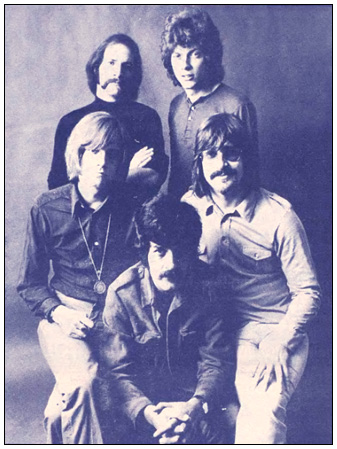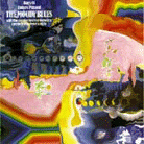|
The Moody Blues Deram 85023 November 1972 Billboard: #2
Formed in 1964, The Moody Blues consisted of Denny Laine, Ray Thomas, Mike Pinder, Clint Warwick, and Graeme Edge. This lineup generated a #10 hit with "Go Now!" -- which, in hindsight, seemed an appropriate instruction to Laine and Warwick, who left the band in 1966. The band signed John Lodge and singer Justin Hayward as replacements.
The group's next album not only featured the new players, but also a new concept. Days of Future Passed had a symphonic sound about it, courtesy of both the London Festival Orchestra and state-of-the-art recording technology. Justin Hayward revealed that the impetus behind the album wasn't entirely creative, stating, 'Decca had the idea... They wanted the group to record a demonstration record because they had lots of equipment, recording equipment and electronic equipment. They wanted a serious record to show off their equipment, to prove that rock and roll could be good in stereo. One of the songs featured on the album was "Nights In White Satin." Hayward outlined how the song came together. He explained, "We were writing and preparing a stage show that was going to be a story about a day in the life of a guy that we used to call the 'Moody Blue'... I wrote 'Nights' as the song that would represent the 'night' part of our stage show, and a lot of personal things went into it. Again, it was kind of a risky song, insofar that if you lay your heart bare and leave yourself open, you're game for some incredible criticism; somebody's going to punch you. But ultimately, I think that's what people like about it." The song first charted on February 10, 1968, but missed the Billboard Hot 100, bubbling under at #103. A second released from the album, "Tuesday Afternoon (Forever Afternoon)," climbed to #24, and the group went on with its career. However, the song remained a favorite of many fans, and in 1972, "Nights In White Satin" was re-released. At first it didn't appear the song would do much better its second time around because it debuted at #100. But the song climbed steadily and in its 14th chart week, the song became The Moody Blues' biggest hit ever, spending two weeks at #2 (behind Johnny Nash's "I Can See Clearly Now"). It just took four years, eight months, and 25 days to do it. After a lengthy sabbatical following the success of their No. 1 1972 set Seventh Sojourn during which all five members pursued solo and collaborative projects, The Moody Blues regrouped in 1978 for their eighth studio album, the platinum-selling Octave. In 1981, they released the No. 1 LP Long Distance Voyager, which boasted the top 15 singles "Gemini Dream" and "The Voice." In 1992, the band celebrated the silver anniversary of Days of Future Passed with a tour featuring a full orchestra, performing a show at Colorado's Red Rocks amphitheater which was recorded for a live album and taped for a PBS video documentary. Keyboardist Mike Pinder, the last living member of the original Moodies lineup following the death of bassist Clint Warwick in 2004, singer/flautist Ray Thomas in 2018, drummer Graeme Edge in 2021, and guitarist Denny Laine in 2023, died on April 24, 2024, at age 82. Bassist John Lodge passed away on Oct. 10, 2025, also at age 82, leaving vocalist/guitarist Justin Hayward and keyboardist Patrick Moraz, who joined the band in 1978 before leaving in 1992, the only surviving members in any incarnation of the band. - Christopher G. Feldman, The Billboard Book of No. 2 Singles, Billboard, 2000.
No comments so far, be the first to comment. |


